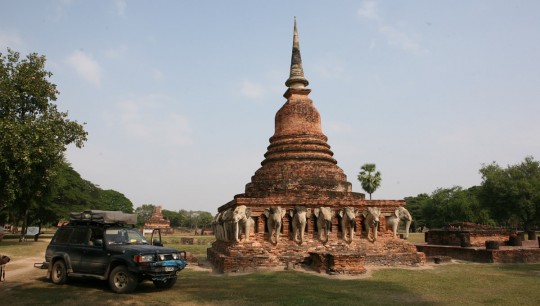
We leave Phnom Penh and go south-west toward the coast and the Bokor national Park. The hope is to camp up there. The roads are OK, but some portions are still under construction and we have to drive on gravels for long stretches.
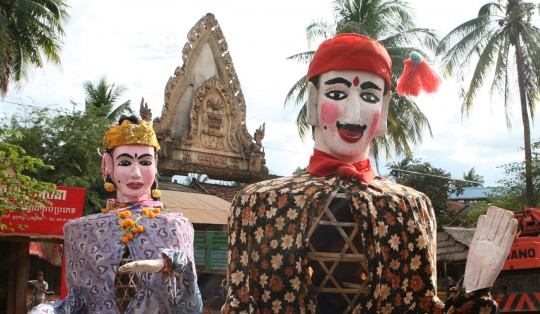
When we arrive at the entrance of the park, the authorities deny us entry, the road being unfinished. After repairing a puncture due to a sharp rock, we decide to find a place on the coast to stay for the night. We are welcomed by friendly inhabitants of Kep, only 25 miles to the Vietnam border.
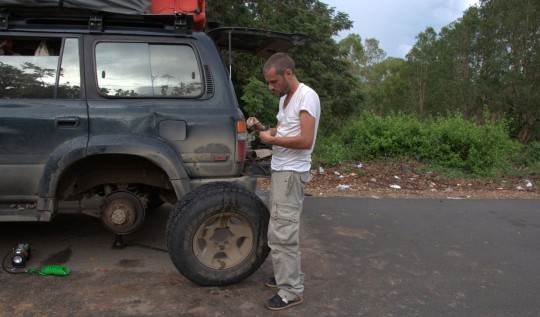
Vikas cook us some Thai food and we are able to eat before the rain comes. In the morning, we follow the coast due north-west which will eventually bring us back to Thailand in a few days.
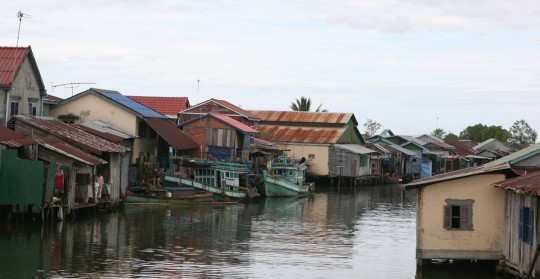
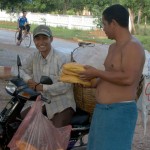
We make another stop in Sihanoukville where we spend the night in a guest house (Seabreeze Guest house, recommended). The landscape along the road is not as interesting as in the center of the country where we could witness the work of farmers. We try the local food several times during this trip, which is less spicy and sweeter than the Thai food but still quite interesting. One dish I enjoyed was the Loc Lac, stir fried cubed beef with red onions dipped in a sauce consisting of lime juice and black pepper.
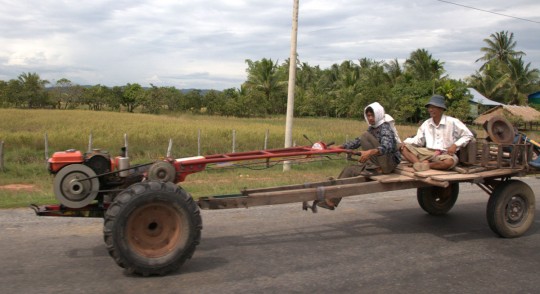
Finally, after crossing some low mountains, we are back at the border with Thailand. Everything goes smoothly there, and after one hour we are on the other side, trying to find a place to stay on the beach.
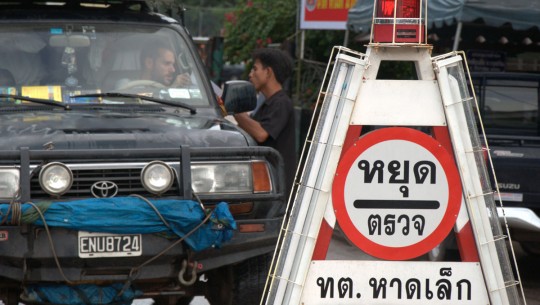
Somewhere around Laem Klat we find the perfect spot, and we take advantage of the few shacks dotting the beach to have food and enjoy a shower in the morning.
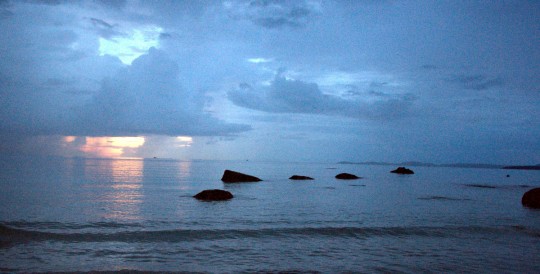
A long day of driving brings us back to Bangkok, and the following day Vikas is flying back to Mumbai. The routine continues for me, and I replenish my food reserves in the city. Later in the day, I go pick up Kathryn, who I used to work with in New York few years back. As Vikas, she will spend a week with me while I am travelling in northern Thailand. I go get her at the Bangkok airport, and leave immediately for Ayuthaya, a city one hundred kilometers north of Bangkok.
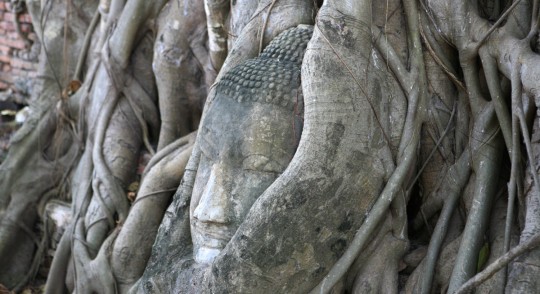
The former royal capital has many temples and palaces, and even if the place is quite popular among tourists, it does not feel overcrowded when you visit the many sites. The city grew around the ruins, so unlike Angkor Wat, the landscape you experience when walking from location to location is quite urban. The old city enclosing most of the ruins is an island located at the confluence of three rivers.
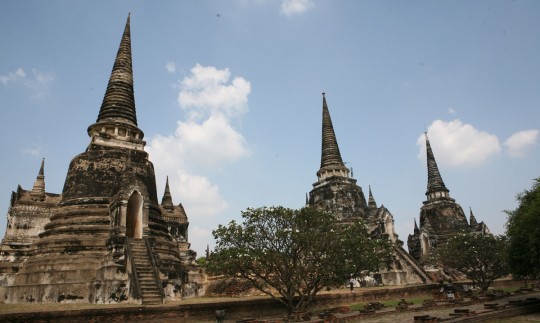
In the last few weeks, I saw a lot of Buddhas, but it was only the beginning, as I was about to discover. In a sanctuary hall, we discovered one of Thailand’s biggest bronze specimens, 56-feet high.
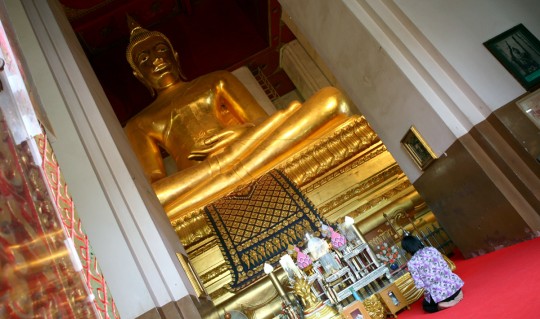
What is interesting about the hall housing the Buddha is that the Burmese government donated a huge amount of money in the ‘50s for its restoration. In fact, they were trying to repair the damage caused by the country army when the city was sacked 200 years earlier. Still, you don’t see such gesture frequently.
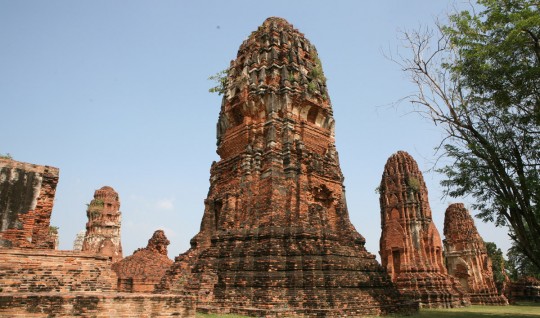
Also worth noticing is the Wat Phanan Choeng, a modern temple on the other side of the river. You take a small boat to get there, and can observe people feeding the fishes around the temple.
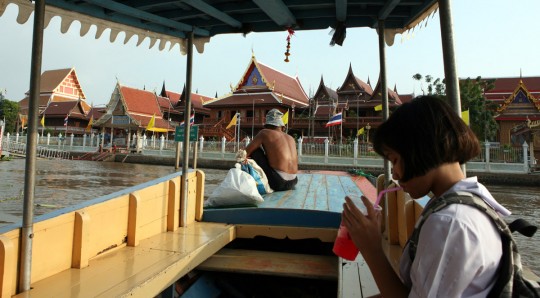
We stay two nights in town, on the front yard of the Baan Lotus guest house (US$6 a night, recommended). It is nice there, and there are showers. I am sure Kathryn appreciates the comfort…
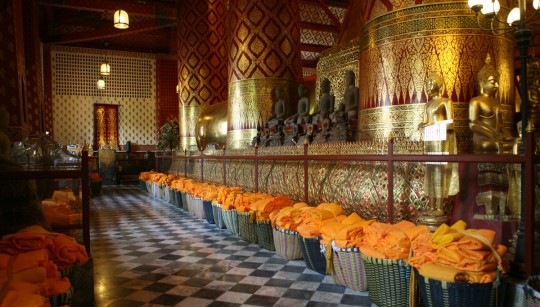
We leave the city and I have a long day of driving to reach Sukhothai, another ancient capital of Thailand.
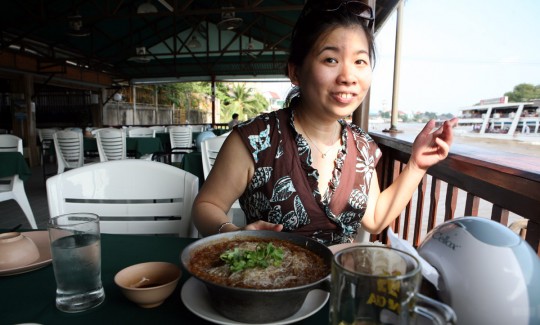
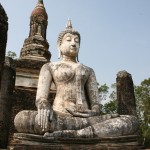
There, we arrive as night falls, and we are lucky enough to camp in the middle of the ruins. It is kind of cool to wake up in the middle of this park filled with old temples (Wat) and statues. An interesting detail differentiates the ruins I see here and the one in Angkor, Cambodia. Here, they used bricks almost everywhere, as in Angkor I remember the structures to be built out of sandstone. Also, Hindu temples in Angkor were altered to display images of the Buddha, but with a Hindu revival later on, Buddha imagery were destroyed. Eventually, Buddhism made its return in the 14th century…
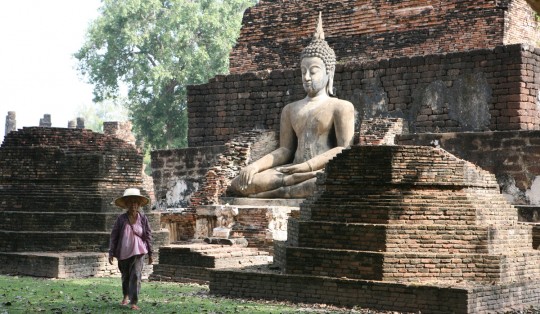
All of that is very nice, but we are ready to change thematic after seeing dozens of “Wats”. So we decide we will go in the Lang San natural park next, where we will be able to get a little bit of nature and a cold night. The park is only seventy kilometers from the Myanmar (Burma) border, so an incursion may be possible…
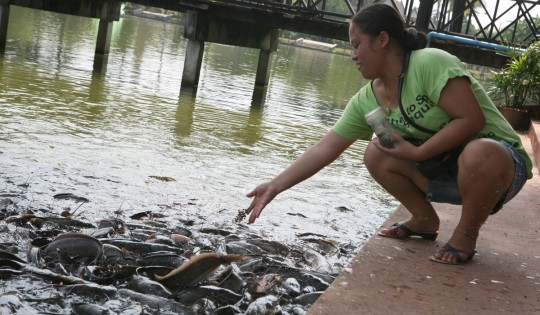

Did you enjoy Sukhothai? I found it relaxing to be there. That was probably my favorite place I visited on my last trip to Thailand in Jan 2009.
Hey Nick,
Let me be the first to tell you happy Thanksgiving. I know that it tomorrow for you, but I hope you were able to have a bit of a celebration. We had deep fried Turkey and garlic mashed potatoes with a bit of parsnip and rosemary. Gonna have another bit of Sailor Jerry Rum (92 proof) with a little bit of cherry lime-ade.
Cheers Mate,
Charlie
Hello again,
In my previous post I had a house full of people… and had imbibed a “bit” too much :0) good times tho.
I do have a couple of questions. In the first picture, who is the gentleman standing on the left side with the camera? Is that Vikas?
While you were fixing your tire, I was kind of surprised by the amount of litter. Is this a problem in the parks as well?
While in the Wat Phanan Choeng, there are a lot of baskets lined up along the walls filled with orange towels. What are the towels used for?
I find it difficult waiting for your next post’s, but I will manage. I hope the two of you will have a great week together.
Cheers mate,
Charlie
Amazing! simply Amazing!
with all the Buddhas around, do you find the people and vibe of the country any more peaceful than other places you’ve visited? sounds like you’re eating more; have you gained some of that lost weight back?
cheers!
suzanne
Nick
Happy Thanksgiving. Thank you for your updates hope you are well. Beautiful pictures.
Ups I meant to ask why is that car built that way (with the steering so far ahead of the driver)
Too many Buddhas ,hmm? Sure seem a lot of different ones.
I was also perplexed by the home-made ‘car’ … wonder what the top speed is?? It would appear as if they mount some kind of farm implement on the donkey car, but how do they get to couple it so that it drives the axle ?
Enjoy your trip with Kathryn.
Wim. with best wishes from Columbus,OH
I presume relative peace has returned to Thailand? No more red shirts causing trouble?
As for the weird vehicle, I’ve seen what are basically motorized wheel barrels in the Hong Kong outer lying islands. The driver sits in a similar fashion. They are much smaller and only about twice as big as a wheel barrel.
So Nick, when are you going to put the New York license plates back? I don’t think you’ll get much trouble anymore from the locals except for curious ones bothering you with questions about your excursion. 😉
@Christian, the car is really a piece of multi-use farm equipment, similar in design to Roto-tiller. What is pictured is the red business end attached to a very basic cart used to haul anything from boxes to hay, straw, wood, or stalks of rice to market, storage or processing which when empty could be used to transport the whole family to town. Attach a different implement for a different job like tilling the soil or making furrows for planting crops. The left hand grip is the throttle the two levers change the drive ratio. It will move from a very very slow crawl to as much as 25 mph. It’s much faster than the traditional water buffalo and doesn’t need to eat food, sleep or stop for potty breaks in the middle of the road.
Cheers.
good one
Great temples and great pictures..keep em coming.Have a safe trip.
Vijay
Thank you, Nick, for the very informative post and excellent pix.
Keep those happy feet rolling and stay safe!
🙂